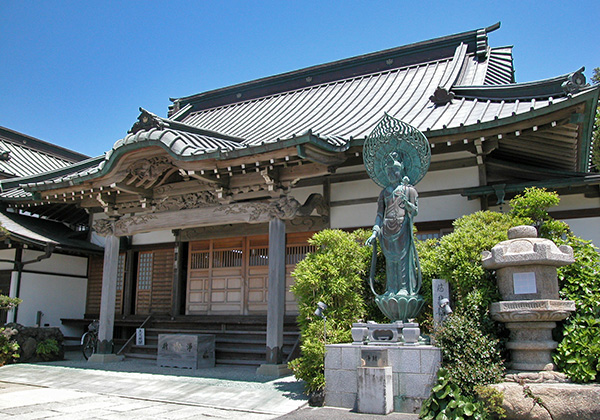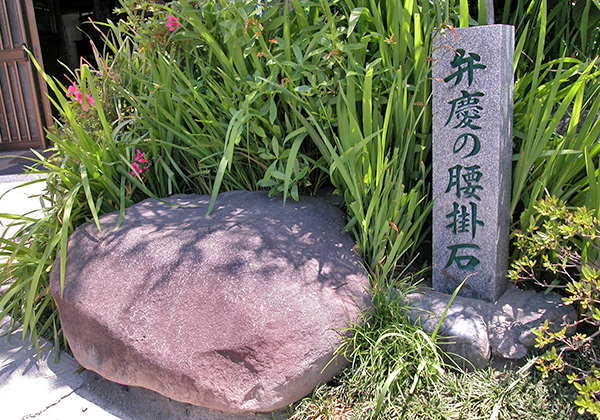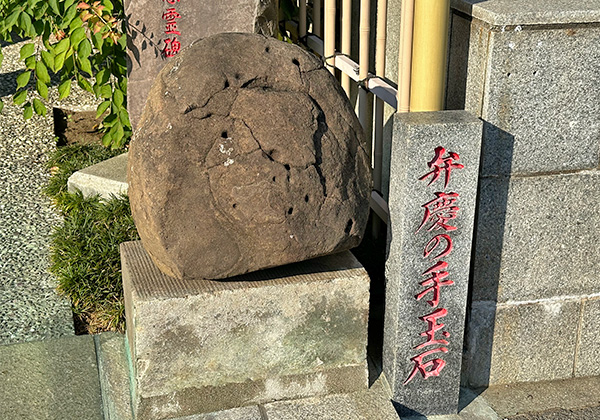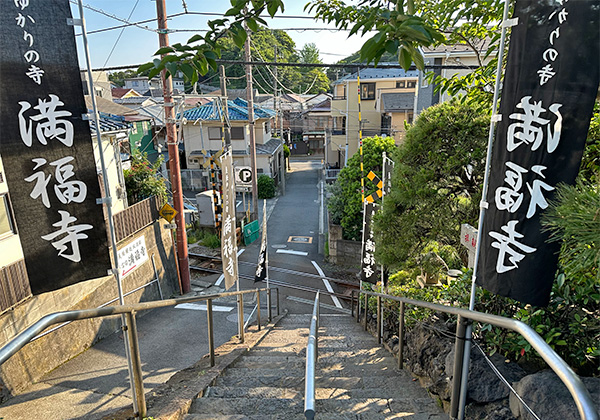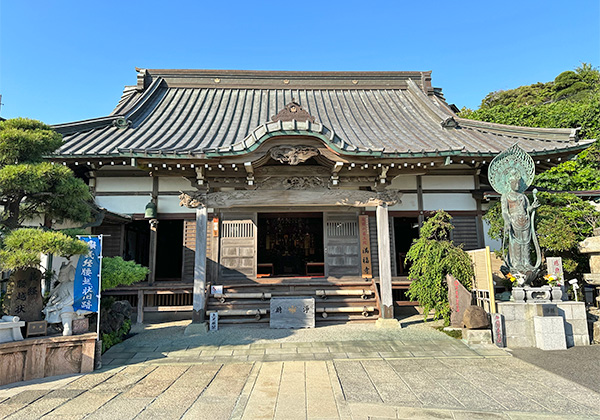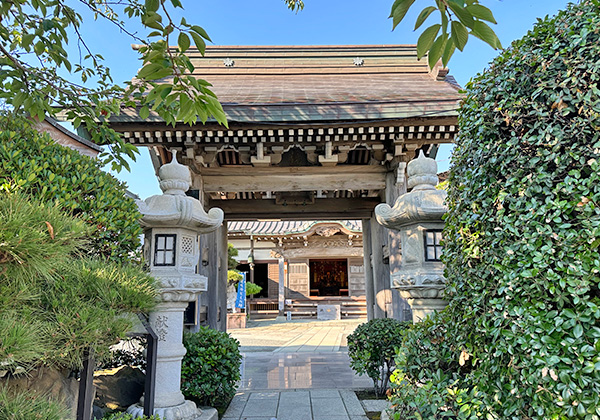Manpukuji
| Official Name | Ryugozan I-o-in Manpukuji {Pronounced ryu-go-zan e-o-in man-pook-gee} |
|---|---|
| Religious sect | Shingon sect, Buddhism |
| Founded | in 744 by unknown |
| Founding priest | Gyoki {gyo-key} |
| Main object of worship | Statue of Yakushi Nyorai {yah-koo-she nyo-rye} |
| Address | 4-8, Koshigoe 2-chome, Kamakura, Kanagawa 248-0033 (show route from current location ) |
| Location | 5,300 meters west southwest of Kamakura Station |
| Time needed to get there | 70 minutes |
| Admission | JPY200 |
| Open | 9:00 - 17:00 |
| Phone number | 0467-31-3612 |
| Restrooms | Available |
Historical Overview
The roots of the Temple stretch back to the mid-eighth century. A famous priest in Kyoto by the name of Gyoki (668-749), who was also famous for his philanthropic activities and well known as a Buddha-statue sculptor, was travelling here at a time when the village was infected by an epidemic. Worried, Emperor Shomu {sho-moo} (701-756) instructed Priest Gyoki to built a small temple here to exorcise the evil spirit and pray for quick recovery from the sickness. Emperor Shomu was an enthusiastic missionary of Buddhism and erected Todaiji in Nara, which was, by the way, designated as the World Heritage Site by the UNESCO in 1998.
Priest Gyoki was really energetic and there are more than 1,200 temples in Japan which were more or less associated with him. For his outstanding virtue, he was conferred the title of Daibosatsu {dye-bo-sah-tsu} or the Great Bodhisattva by the emperor. As a matter of fact, Priest Gyoki was a promoter of temple construction and is said to have built as many as 49, including Todaiji. In Kamakura, Sugimoto-dera was also founded by him.
The Temple will perhaps remind many Japanese of Yoshitsune Minamoto {yoh-she-tsu-neh me-nah-moh-toh} (1159-1189), half brother of Yoritomo {yo-re-toh-moh} Minamoto (1147-1199), the founder of Kamakura Shogunate. Yoshitsune was a younger brother of Yoritomo by a different mother. At the time of the battle fought by Yoritomo against the Taira Clan, Yoshitsune rendered distinguished services as a chief commander driving the Taira troops way down to the western end of the Honshu Island. There are plenty of heroic episodes in connection with his performances, some of which are dramatized in the Noh play Ataka {ah-tah-kah} and its Kabuki version Kanjincho {kan-gin-cho}. Because of his tragic fate, Yoshitsune has long been sympathized by many Japanese.
One of Yoshitsune's misfortune occurred right at the Temple in 1185. After winning a landslide victory over the Taira Clan, he tried to triumphantly return to Kamakura from Kyoto bringing important POWs of the Taira. When he reached here at Koshigoe {ko-she-go-eh}, however, Yoritomo refused to meet him. Koshigoe was then the nearest post-town to Kamakura in the ancient high-road spanning 480 kilometers between Kamakura and Kyoto. Yoritomo ordered him not to come in beyond Koshigoe. One of the main reasons was that Yoshitsune got into favor with Retired Emperor Goshirakawa (1127-1192), who held real power in the imperial court, to the extent that Yoritomo could no longer tolerate. In fact, Yoshitsune was granted one of the highest honors from the Retired Emperor without getting Yoritomo's approval in advance. The honor entitled him to be treated like a court noble in Kyoto. His behavior must have seemed disloyal to Yoritomo.
Yoshitsune wrote the famous letter called Koshigoe-Jo {ko-she-go-eh-joe} meaning a letter written in Koshigoe addressed to Yoritomo (to his top aide to be precise), and appealed how loyal he had been to Yoritomo, how he contributed to the victory over the Taira Clan and what a pivotal role he played in keeping Kamakura secure. However, Yoritomo did not forgive him. Yoritomo had to demonstrate his firm intention to punish whoever, be it his brother or children, did not follow his order, or broke the samurai code. Yoshitsune could not help but give up seeing his elder brother, and returned to Kyoto in grief, where he harbored antipathy against Yoritomo and made up his mind in the end to fight battle against his merciless brother.
Knowing his attempt, Yoritomo ordered his men to capture Yoshitsune and kill him. Yoshitsune and his suite turned fugitives and narrowly eluded Yoritomo's pursuers. Nowhere else to go, they came up to Hiraizumi, Iwate Prefecture, counting on his former patron Fujiwara Clan, where he had been under their custody earlier for six years in his boyhood. However, the former chief of Fujiwara had already been dead and the new head was no longer helpful to Yoshitsune for fear that protecting Yoshitsune might provoke Yoritomo's hostility. Yoshitsune's whereabout was soon known to Yoritomo, and he was finally forced to kill himself together with all his retainers. He was only 30 years old. To certify Yoshitsune was truly killed, Fujiwara's samurai brought Yoshitsune's decapitated head preserved in a liquor tub to Kamakura. Identification of his head took place right here at Koshigoe in summer of 1189. As it had been about six weeks since the decapitation, Yoshitsune's head was decomposed and barely identifiable. From this fact, legend has it that it was dummy's head and the real Yoshitsune escaped to Hokkaido and then to mainland China becoming Chinghis Khan.
